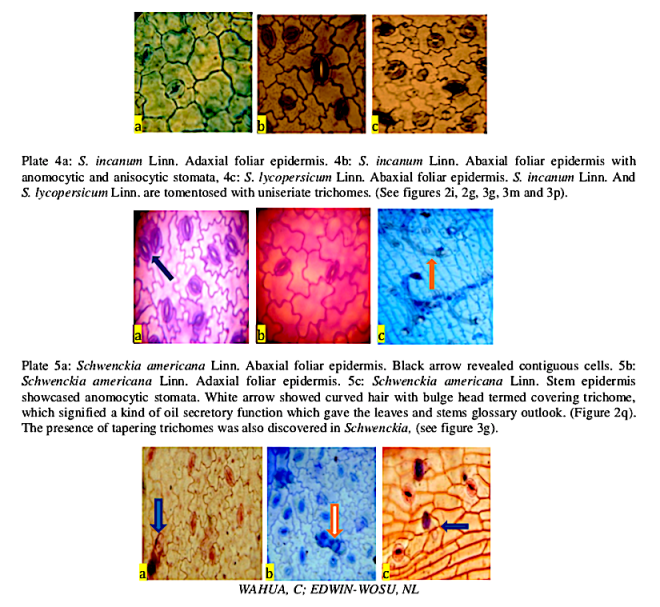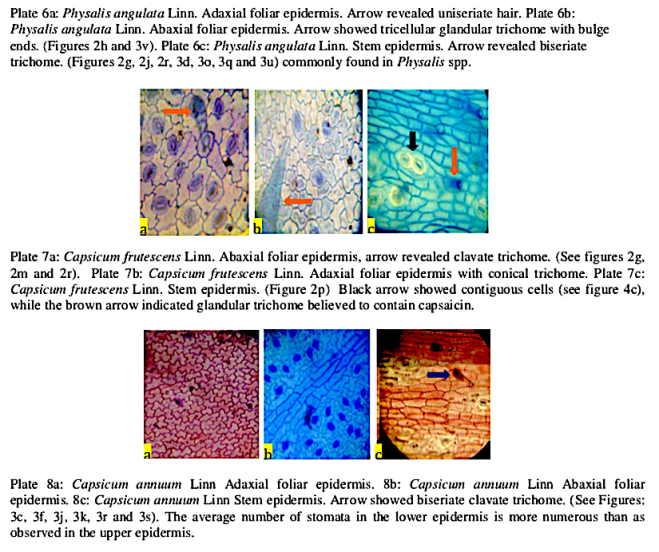Fig 4: Stomatal types in Solanaceae. 4a to 4b: Anomcytic; 4c: contiguous cells; 4d to 4e: anisocytic; 4f: anomocytic; 4g: paracytic stoma. Paracytic stomata observed in stem epidermis but not as common as anomocytic and anisocytic stomata.


Morphological Characters, Occurrence and Distribution among Members of the Family Solanaceae in Parts of the Niger Delta Ecological Zone
by Wahua C., Edwin-Wosu N. L. (2016)
*1 WAHUA, C; EDWIN-WOSU, NL
Department of Plant Science and Biotechnology,
University of Port Harcourt, Choba,
P.M.B.5323, Nigeria.
===
in J. Appl. Sci. Environ. Manage. 20 (3): 583-590 –
ABSTRACT:
This study investigated a comparative micro-morphological features of 14 species in the family Solanaceae, using trichome and stomatal complements in delimitation of species and genera within the taxon, family. The genus Solanum L. is the largest among the genera in Solanaceae. Solanum aethiopicum Linn. Solanum macrocarpon Linn. Solanum torvum Swartz. Solanum anomalum Thonn. Solanum erianthum D. Don, are covered with stellate trichomes. While Solanum nigrum Linn., Solanum lycopersicum Linn., Solanum incanum Linn., Datura spp., Schwenckia spp., Capsicum spp., Physalis spp. have simple uniseriate trichomes. S. aethiopicum Linn. S. torvum Swartz. S. lycopersicum Linn, and Physalis micrantha Linn, revealed higher trichome indices. In most species, these trichomes are not visibly observed with the naked eyes. While in some others such as in S. torvum and S. lycopersicum the trichomes are observable on the plants. Glandular hairs are also present in Solanaceae. Stomata is amphistomatic, types commonly observed are: anisocytic and anomocytic, while paracytic and tetracytic stomata are sometimes revealed in stem epidermis in Solanaceae. The usefulness of trichome and stomatal complements in species and generic taxa are recommended as pertinent characters for classification in Solanaceae and their density may vary from one ecological zone to another.
